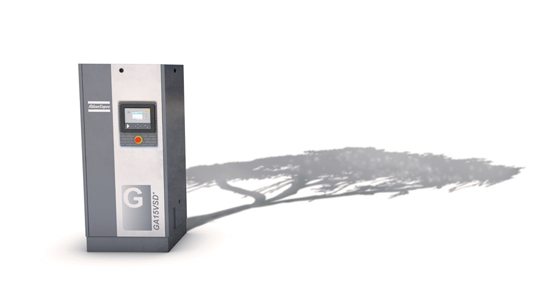Variable vs. Fixed. It’s not exactly the equivalent of Superman vs. Batman. But, it’s beneficial to understand the differences between the two technologies, the benefits provided by VSD and ultimately the peak performance that can be delivered when they’re working together.
Variable Speed Drive v. Fixed Speed Drive
A Variable Speed Drive (VSD), speed-controller or frequency-controlled, compressor automatically adjusts its motor speed to the air demand. Its counterpart – fixed speed, idling compressor, or load/unload compressor – is either on full throttle or off. Often called VFD, or Variable Frequency Drive, these versatile controllers adjust output to meet demand.
Think of it like you would a car: an idling compressor either drives 100 mph or not at all. That’s fine if the application requires either a full-load or no-load compressed air supply (the auto equivalent would be a quarter-mile, top-fuel dragster – go all-out or don’t go at all). But most applications don’t require these kinds of demands; they have a fluctuating air demand, and that’s where a VSD compressor comes in.
A Variable Speed Drive compressor simply adjusts its motor and element speed to match the demand. The drive’s output frequency is directly related to the motor’s speed; the higher the frequency, the higher the speed that the motor will turn. If an application does not require an electric motor to run at full speed, the VSD or VFD can be used to decrease the frequency and voltage to meet the requirements of the electric motor’s load. As the application’s motor speed requirements change, the VFD can simply increase or decrease the motor speed to meet the speed requirement. Simply put, if you need X, you get X. You need Y, you get Y.
VSD Advantages
- Superior technology means superior energy efficiency.
- Superior efficiency means greater cost savings – VSD compressors regularly consume as much as 35 percent less energy than fixed speed compressors sized for the same application – as well as the associated reduction in carbon footprint and return on investment.
- Superior performance: Because VSD compressors continually and automatically vary their output; they provide a precise match for the particular demand at the time, optimizing performance.
- Superior reaction: VSD compressors can start and stop under full system pressure; there is no need to unload, which saves time and energy without impacting production. There is no time lost to idling and no blow-off losses in normal operations.
- Superior adaptability: With VSD, you can avoid peak currents at start-up and as such, the penalties most electricity companies attach to peak current loads.
Working Together
VSD, or VFD, is not best for every compressed air operation or system. Fixed speed compressors are better suited for operations that demand 100 percent load, 100 percent of the time.
However in operations that require fluctuating compressed air demands on top of fixed load demands, adding a VSD compressor to system with fixed speed compressors is often the most efficient and effective option.
Just like when Batman and Superman join forces.
Source: Compressed Air Blog


